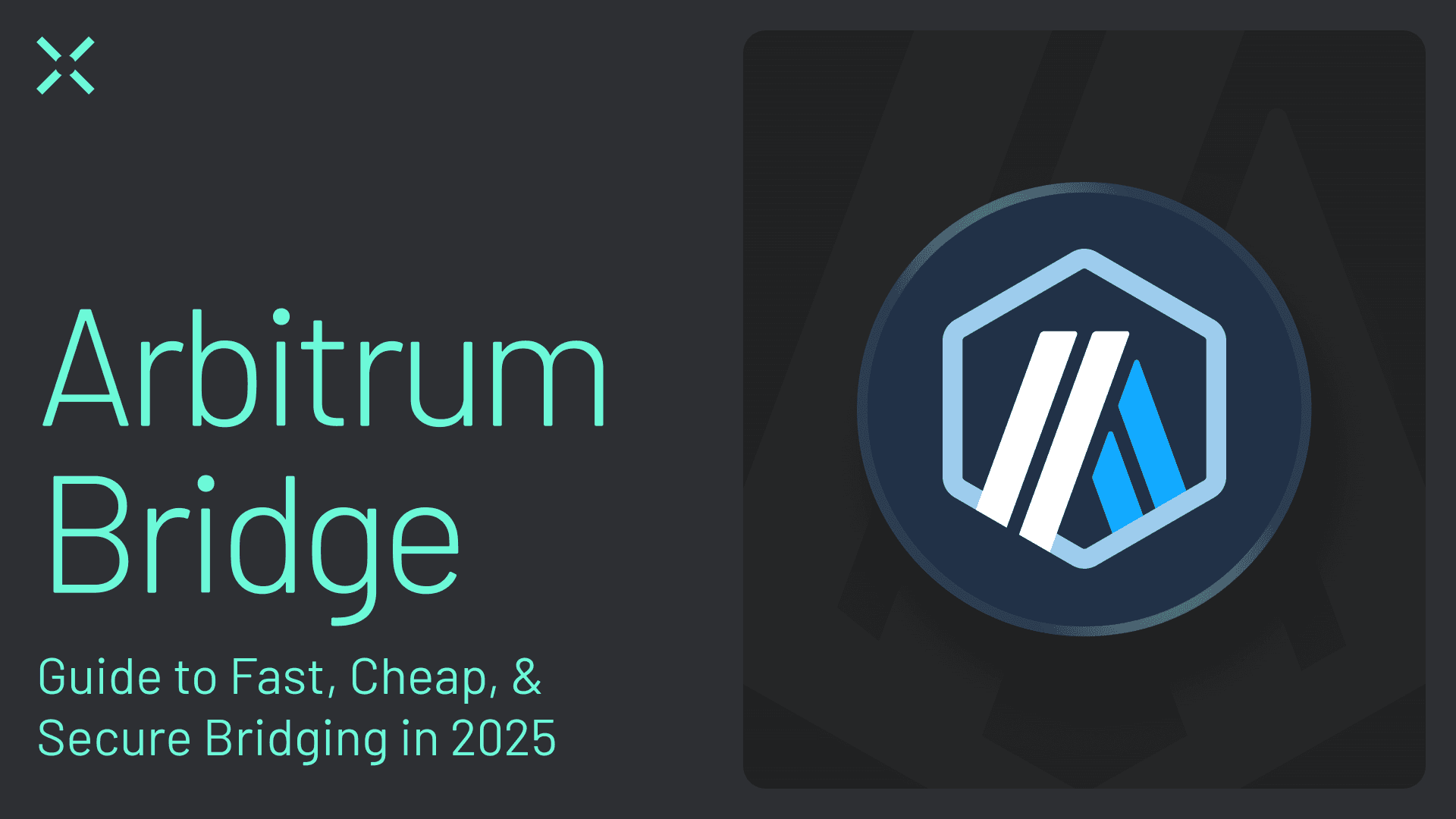As DeFi continues to mature, Arbitrum has established itself as a leading Ethereum Layer 2 solution with over $2.6 billion in Total Value Locked (TVL), 1.3 billion transactions processed, and $18.7 billion in native bridging volume. This robust ecosystem offers significant opportunities for yield farming, trading, and other DeFi activities.
However, accessing these opportunities requires bridging assets onto the network—a process that can be frustratingly slow and expensive with many bridging solutions. While the native Arbitrum bridge works reliably, it doesn't offer the speed many users need in today's fast-moving DeFi landscape.
Read on to discover how to bridge to Arbitrum in 2025 and why Across is the fastest, cheapest, and most reliable Arbitrum bridge for seamless crosschain transactions to mainnet and other L2s.
Arbitrum Ecosystem Overview
Arbitrum is a dominant force in the Ethereum Layer 2 ecosystem. An increasingly popular L2 in terms of TVL, Arbitrum delivers scalability, security, and cost-efficiency. By the way, Arbitrum isn’t a single entity; rather, it is a multifaceted network of chains designed for various use cases.
Arbitrum One: The flagship network known for its deep liquidity, fast transactions, and robust DeFi ecosystem. It uses Optimistic Rollups and stores transaction data on the Ethereum mainnet.
Arbitrum Nova: Optimized for gaming and high-volume social applications, Nova offers lower fees and greater throughput than Arbitrum One, making it a strong choice for developers building high-throughput applications.
Orbit Chains: The Arbitrum network also includes a network of 50+ independent custom high-performant chains that benefit from all of Arbitrum’s upgrades, including performance optimizations, Stylus' WASM VM, and permissionless validation.
ARB Token: The overarching governance token of the Arbitrum DAO, giving holders a say in the future direction of the network while incentivizing ecosystem growth.
Why Bridge to Arbitrum?
The demand for bridging to Arbitrum has continued to grow as users chase opportunities on the L2. As a result, Arbitrum has maintained one of the highest L2 TVLs, surpassing Optimism by over 300% and, at times, going neck and neck with Base.
But why is Arbitrum attracting users? Some would argue that it goes back to the ARB token airdrop in March 2023. After that airdrop, Arbitrum has allocated millions in grants and incentives to onboard new users and deepen liquidity across its ecosystem.
In 2024, initiatives like Arbitrum STIP set out to distribute $50 million in incentives to boost adoption across major DeFi platforms like GMX, Radiant Capital, and Camelot, which have made them some of the most competitive yield farms in DeFi; unsurprisingly, the incentives have helped attract new users into the Arbitrum ecosystem. The combination of having DeFi platforms that people want to use and attracting them with economic incentives is a steady growth in the number of crypto users bridging to Arbitrum.
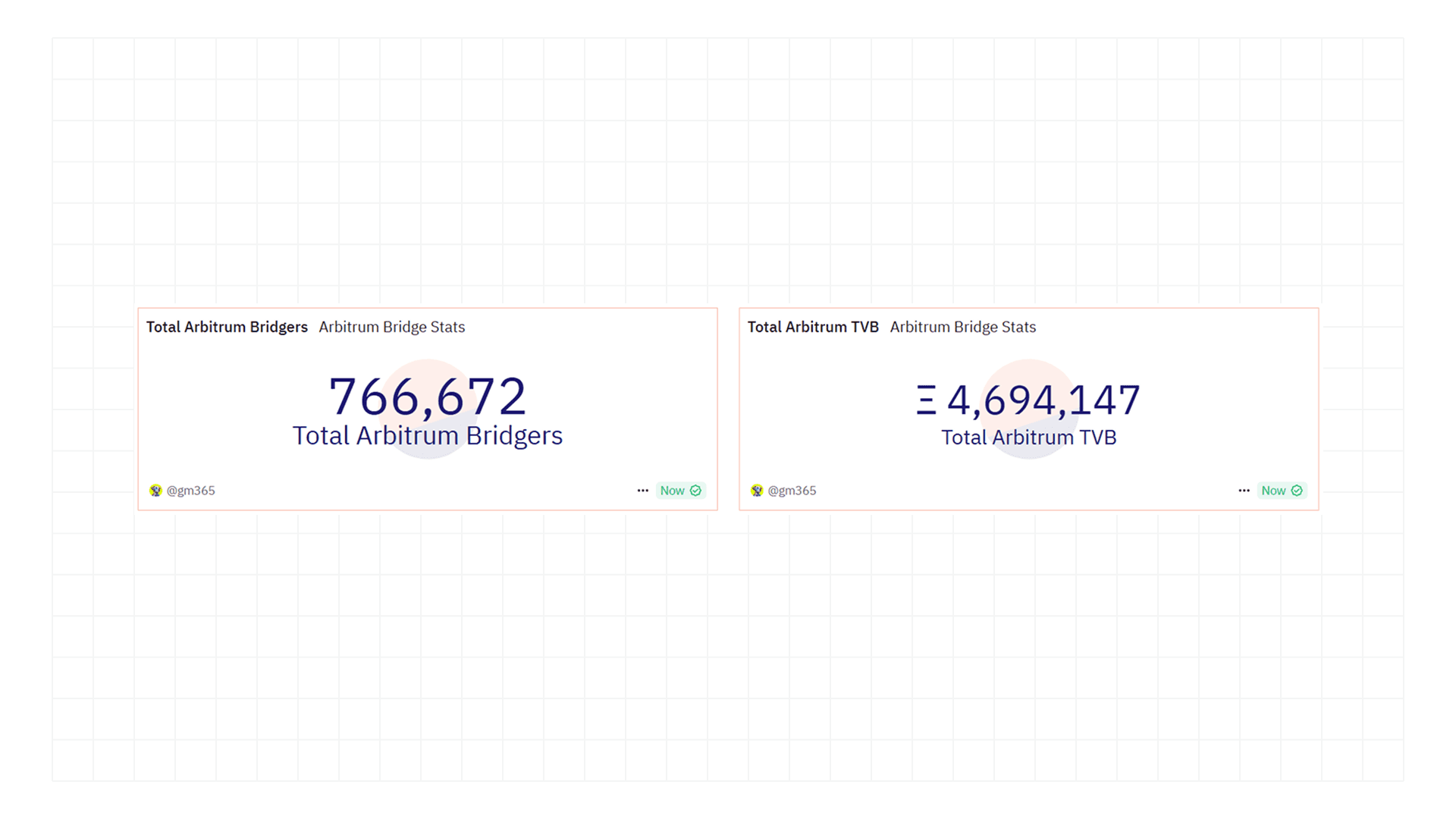
A steady growth in the number of crypto users bridging to Arbitrum.
Another factor that makes Arbitrum attractive is its relatively low transaction costs. With gas fees averaging 0.0513 Gwei in 2024—dramatically lower than Ethereum mainnet’s 19.65 Gwei average for the same year—Arbitrum remains a top choice for users looking to maximize capital efficiency while avoiding high costs.
However, low fees and robust liquidity aren't the only benefits of Arbitrum. While expanding use cases like NFTs and gaming are enhancing the ecosystem, Arbitrum is also gaining traction through partnerships, institutional accessibility, and real-world use cases that should pique the interest of DeFi participants.
Mainstream Accessibility: Robinhood’s self-custody wallet supports swaps on Arbitrum, bringing low-cost, seamless trading to retail users and highlighting Arbitrum’s growing mainstream appeal.
Institutional Innovation: Tether selected Arbitrum to power its crosschain stablecoin, USDt, valued at more than $141 billion.
RWA Expansion: French fintech company Spiko introduced $150 million in institutional-grade money market funds to Arbitrum, solidifying the L2's role in bridging traditional and decentralized finance.
Leadership Growth: A former Nasdaq executive recently joined Arbitrum's partner studio and venture capital arm, Tandem, showcasing the L2’s ambition to solidify its status as a leader in institutional adoption.
Scalability & Adoption: In October 2024, Arbitrum One surpassed 1 billion transactions, surpassing Base as one of the first L2s to achieve the milestone at the time and underscoring its growing adoption as a scaling solution.
While Arbitrum has effectively used liquidity mining incentives to boost ecosystem growth, including targeted programs with Uniswap and Aave, it also drives organic adoption via other verticals. For users exploring DeFi or seeking fast, cost-effective transactions, Arbitrum is a leading choice.
Understanding Arbitrum Bridge Options
The native Arbitrum bridge is the native path to move assets between Ethereum and Arbitrum. It uses a mint-and-burn mechanism to ensure that tokens are accounted for on both networks. While it offers secure, trust-minimized transfers, it has a major downside: bridging takes up to 15 minutes to complete, and withdrawals take eight days due to Optimistic Rollup security measures.
Here’s an example of the fees and bridging times you can expect from the native Arbitrum bridge:
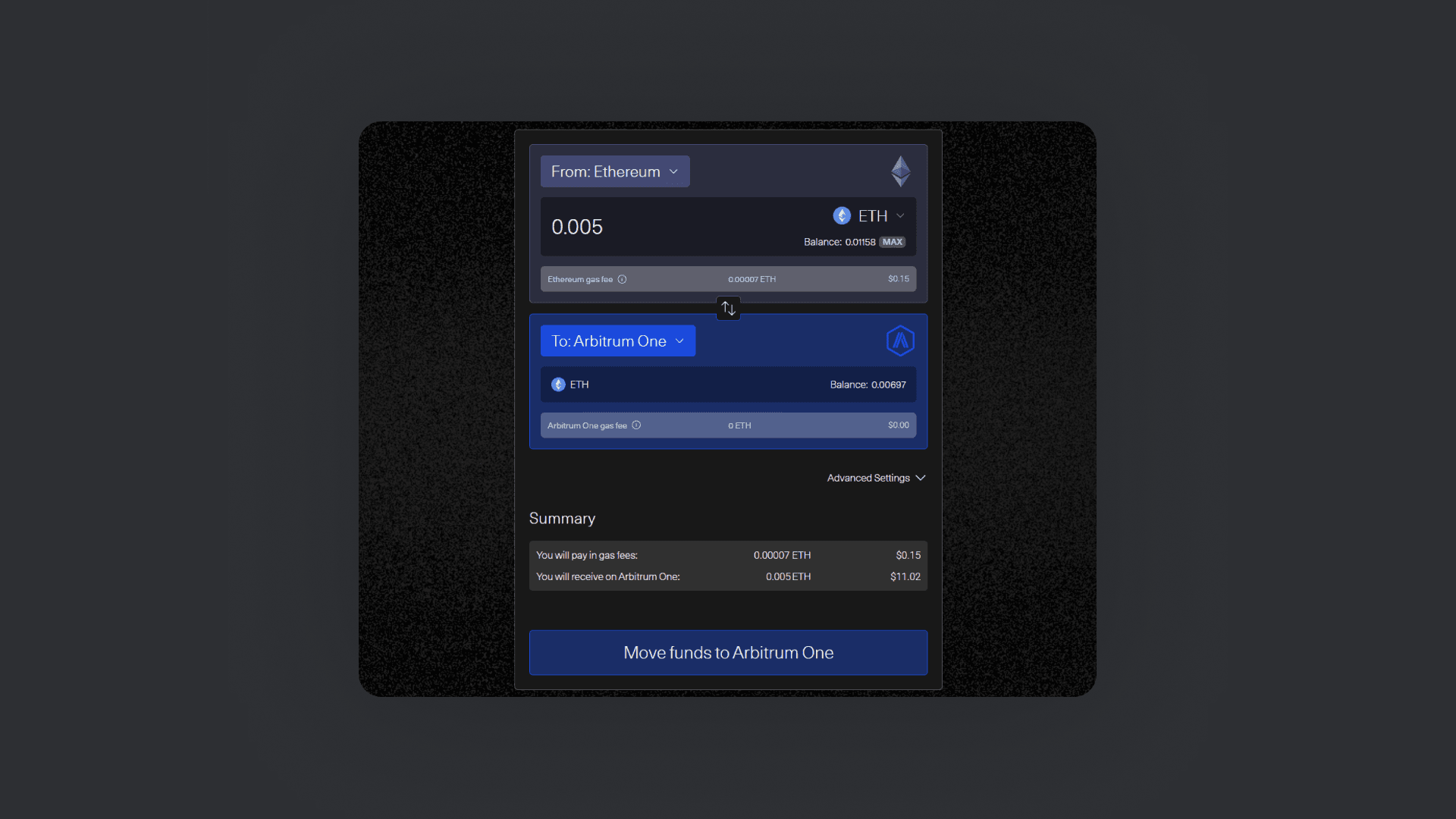
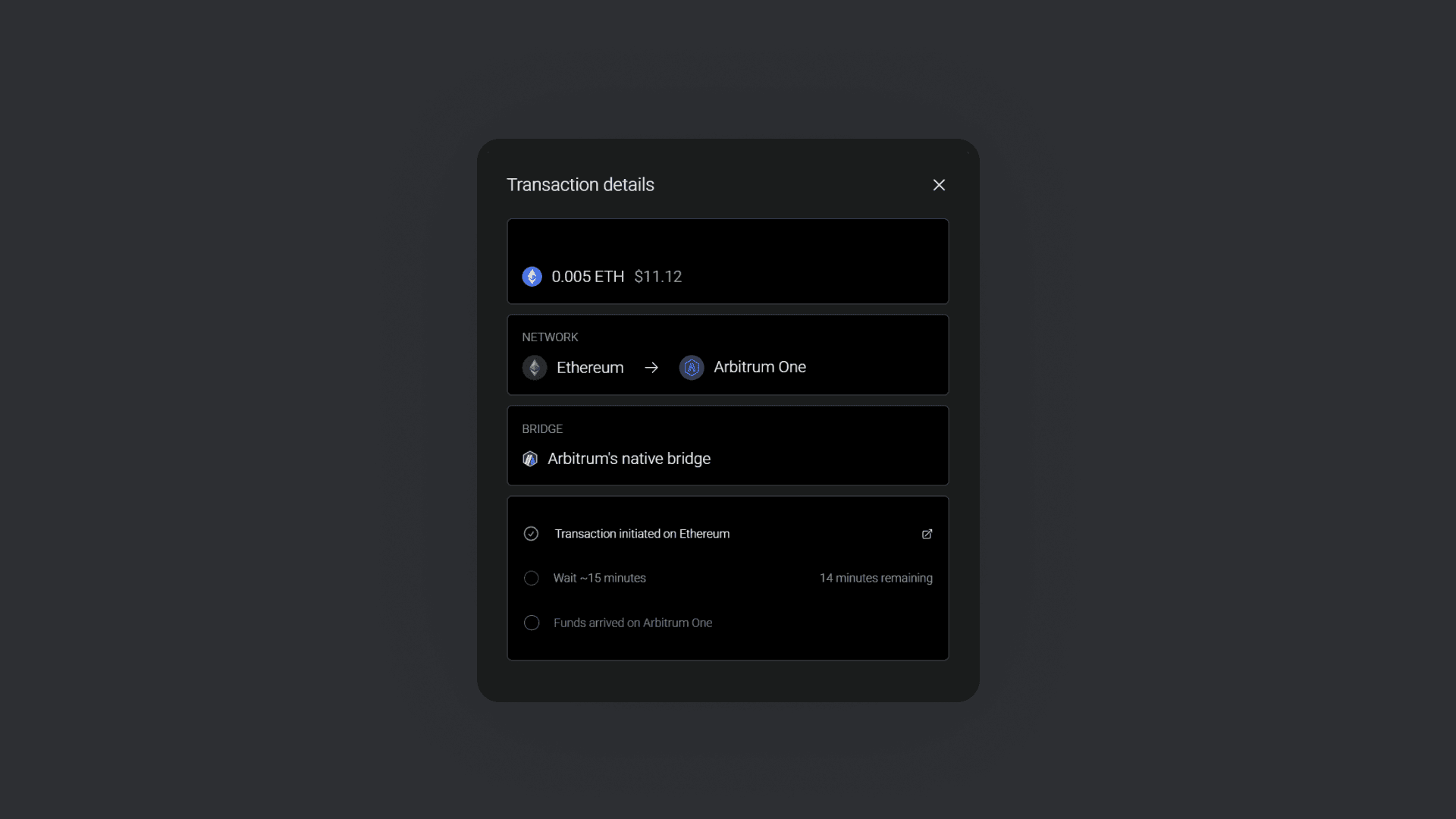
Comparing Arbitrum Bridge Options
Bridging to Arbitrum means gaining access to a thriving DeFi ecosystem, but how you bridge matters.
If speed isn’t a concern, and you don’t mind waiting eight days for withdrawals, the official Arbitrum bridge works fine for high-value transfers. But for those who want instant access to their funds, lower fees, and a seamless user experience, Across is the better choice.
Additionally, the native bridge only supports direct transfers between Base, Orbit Chains, and Arbitrum, limiting the options available to users who want to bridge assets from other networks.
Across offers quick transfers and lower costs, making it a practical choice for moving assets to and from Arbitrum. Whether yield farming, trading, or simply transferring funds, using the right bridge helps avoid delays and unnecessary fees.

When to Use the Native Arbitrum Bridge
For scenarios where speed is not a priority: Users who don’t mind waiting 15 minutes to bridge and a week-long challenge period to withdraw back to mainnet.
For standard deposits and withdrawals: If you are only moving assets occasionally and instant access isn’t critical.
If you are moving assets of significant economic value: When making high-value transactions, which can run into the hundreds of thousands or millions of dollars, the native bridge might be the most cost-effective option in this use case.
When to Use Across: The Most Efficient Arbitrum Bridge
For those who need instant bridging, lower fees, and the same level of security, Across is the superior alternative to the native Arbitrum bridge. Instead of waiting days for withdrawals, Across gets your assets to and from Arbitrum in seconds, at a fraction of the cost.
Here’s an example of the fees and times you can expect for bridging to Arbitrum on Across:
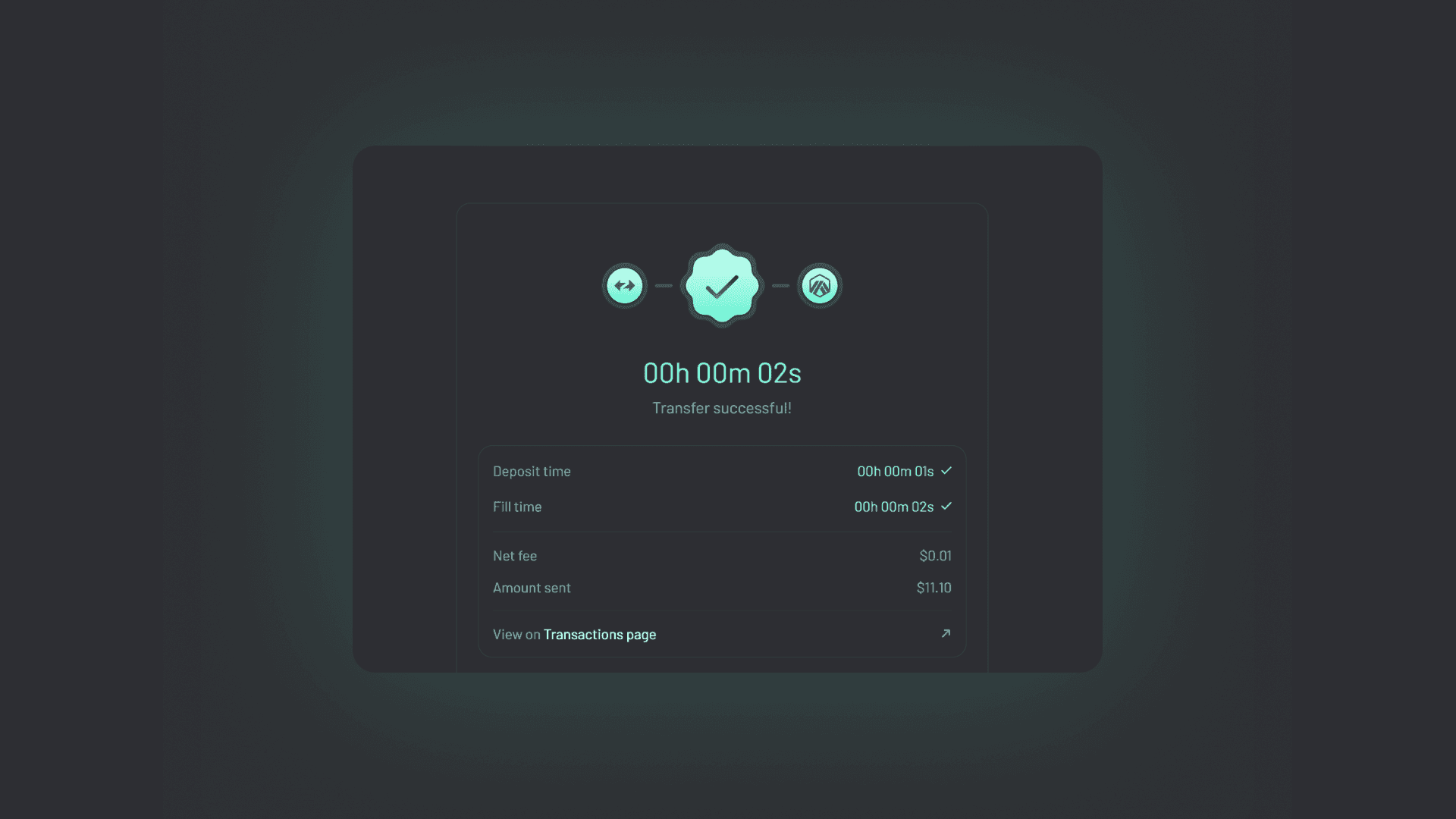

Using Across to bridge to Arbitrum means benefiting from:
Transfers that are completed within seconds, reducing wait times significantly.
Liquidity pools that help keep fees lower compared to other bridging solutions.
Across’ Optimistic Oracle, used to validate transactions, maintaining Ethereum-level security standards.
Instant access to funds without delays, in contrast to the native bridge’s eight-day challenge period.
By reducing bridging times and fees, Across delivers the most efficient solution for users who want the quickest, most efficient, and cheapest way to bridge to Arbitrum.
Step-by-Step Guide: Bridging to Arbitrum with Across
If you’ve read our previous crypto bridging guides, you would understand how bridging works and why Across is the most efficient crypto bridge.
Let’s look at what bridging to and from Arbitrum with Across entails.
Step 1: Visit app.across.to
To bridge to Arbitrum, start by visiting the Across bridging app.
The first step is to connect your wallet.
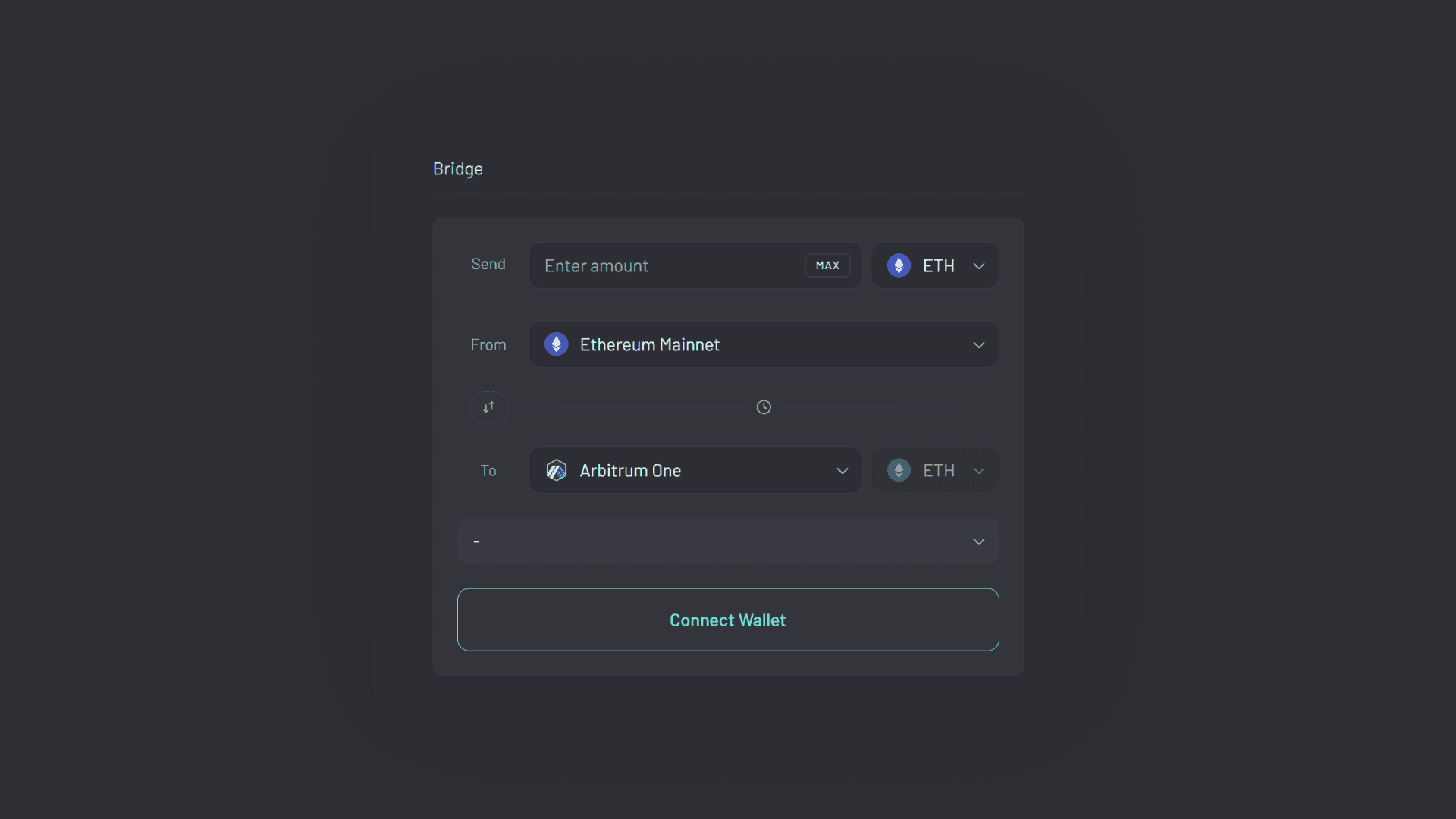
Step 2: Select Your Chains
Next, specify your origin (from) chain and destination (to) chain for bridging. For this example, we’ll bridge from ZKsync to Arbitrum. At this time, you’ll also want to specify how much ETH you'd like to bridge, which will prompt Across to estimate how long your transaction might take and how much it will cost.
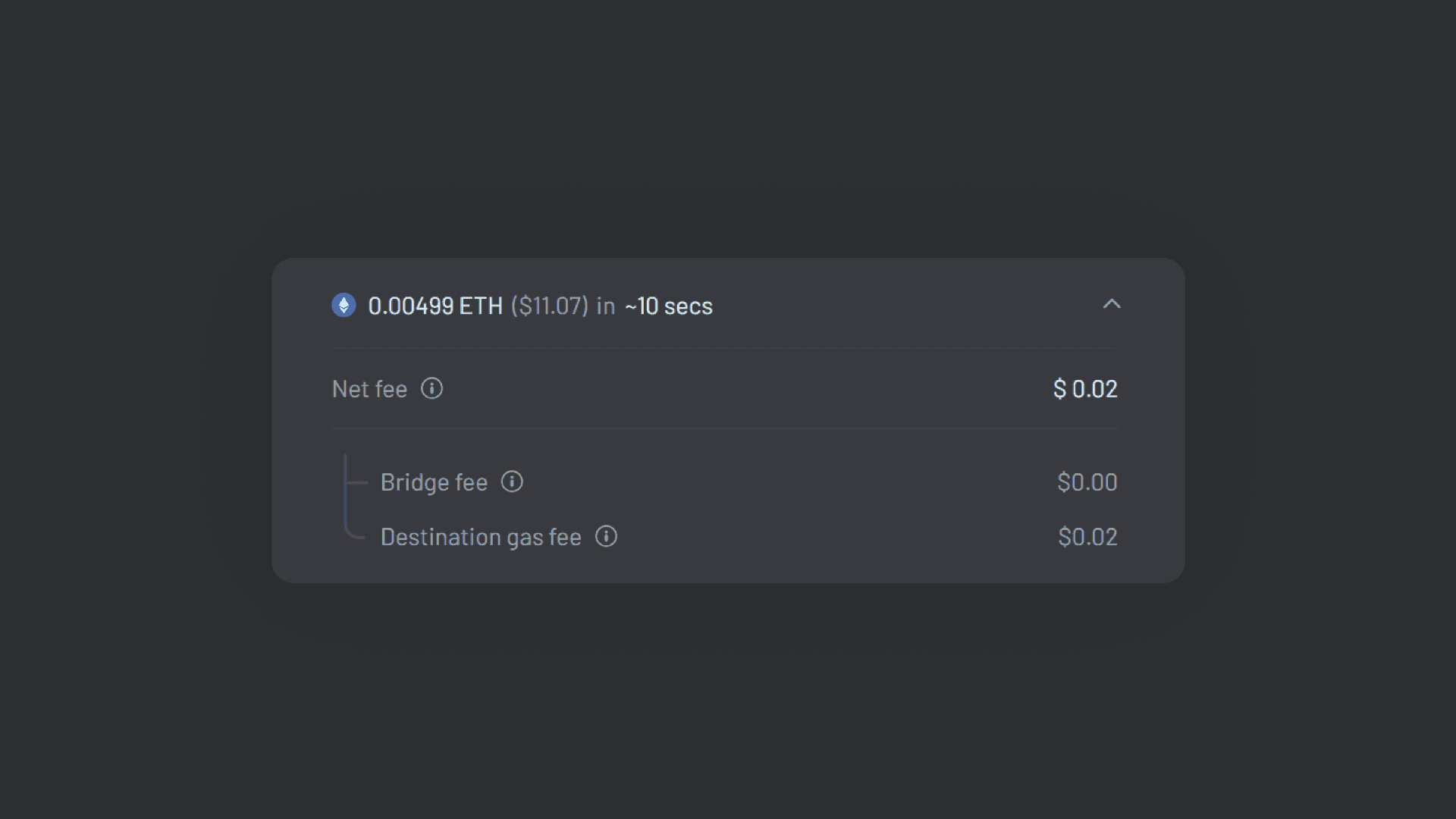
Note: this process is the same if you’re bridging from Arbitrum back to your original chain. Just reverse the origin and destination chains.
Step 3: Confirm and Send
Once you’ve specified the amount of ETH you'd like to bridge and reviewed the fee details, click “confirm transaction,” and your coins will be on their way. Transactions are completed in seconds, so you’ll receive your assets on Arbitrum almost instantly.
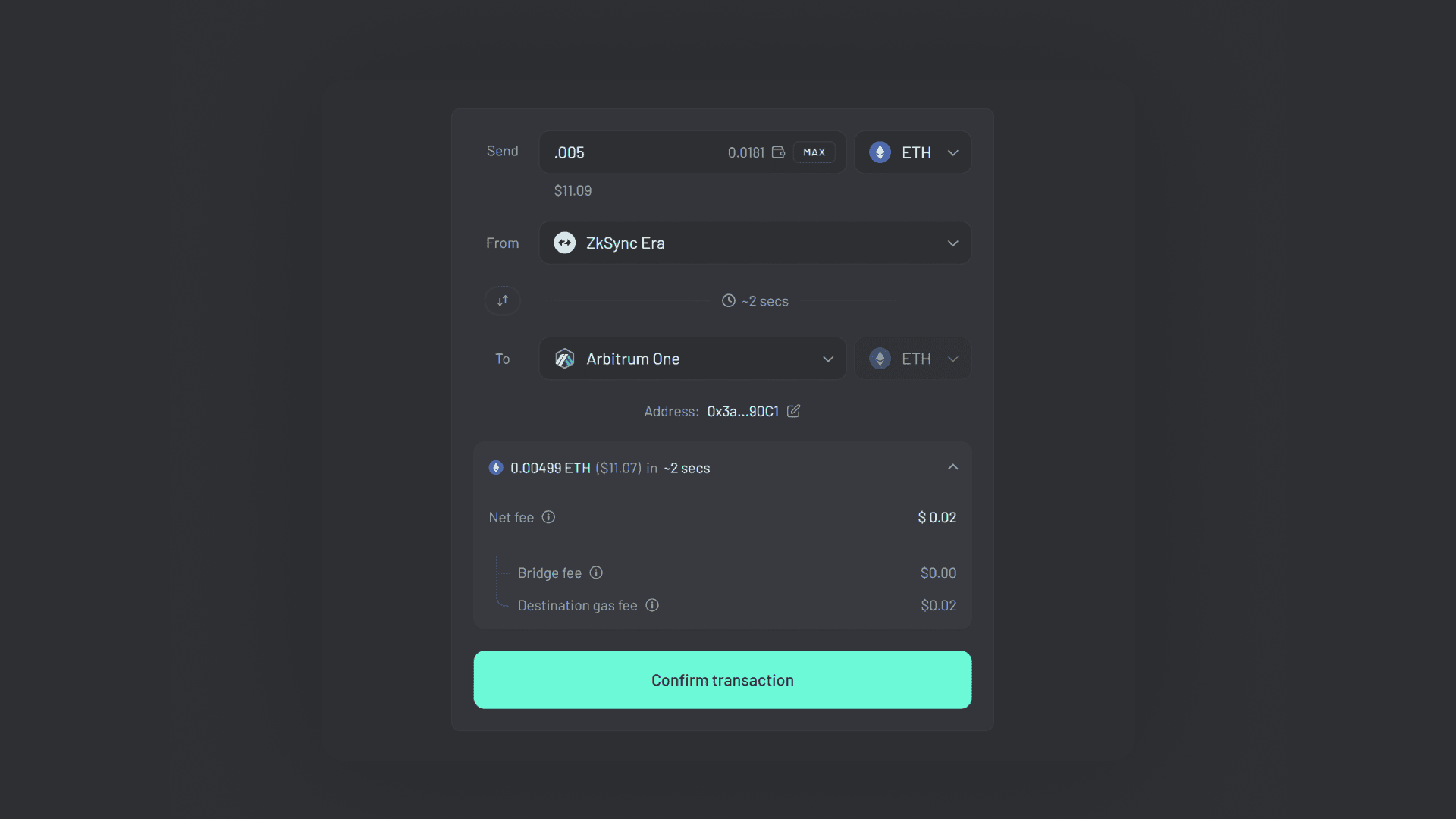
With that, your bridging is complete!
To maximize your bridging experience, always double—or even triple-check your transaction details before bridging. You don't want to waste a gas fee by selecting the wrong destination chain and having to bridge the funds again to the chain you originally wanted.
Conclusion
Bridging to Arbitrum doesn't have to be a slow, expensive process. While the native Arbitrum bridge provides a secure option for those prioritizing trust-minimized transfers, Across offers a superior experience for most users by combining speed, affordability, and security.
With transaction times of just seconds instead of minutes (or days for withdrawals), and fees that are consistently lower than alternatives, Across has established itself as the premier Arbitrum bridge for 2025.
Whether you're looking to capitalize on Arbitrum's growing DeFi opportunities, participate in liquidity mining programs, or transfer assets between chains, choosing the right bridge makes all the difference in your crosschain experience.
By bridging with Across, you'll save time and money while enjoying the same level of security that makes Ethereum's L2 ecosystem so valuable.
Ready for the cheapest way to bridge to Arbitrum?
Try Across today and experience the best Arbitrum bridge solution firsthand.
Additional Resources
For more information on Arbitrum, bridging, and crosschain transactions, check out these resources:
Arbitrum Docs – Official documentation covering Arbitrum One, Nova, and the ecosystem.
Across – Learn more about Across and start bridging.
Across App – Direct link to the Across bridging interface.
Arbitrum Bridge – Official Arbitrum bridging platform.
Arbitrum Foundation Blog – Updates on governance, incentives, and ecosystem developments.
If you're new to bridging, check out these guides:

